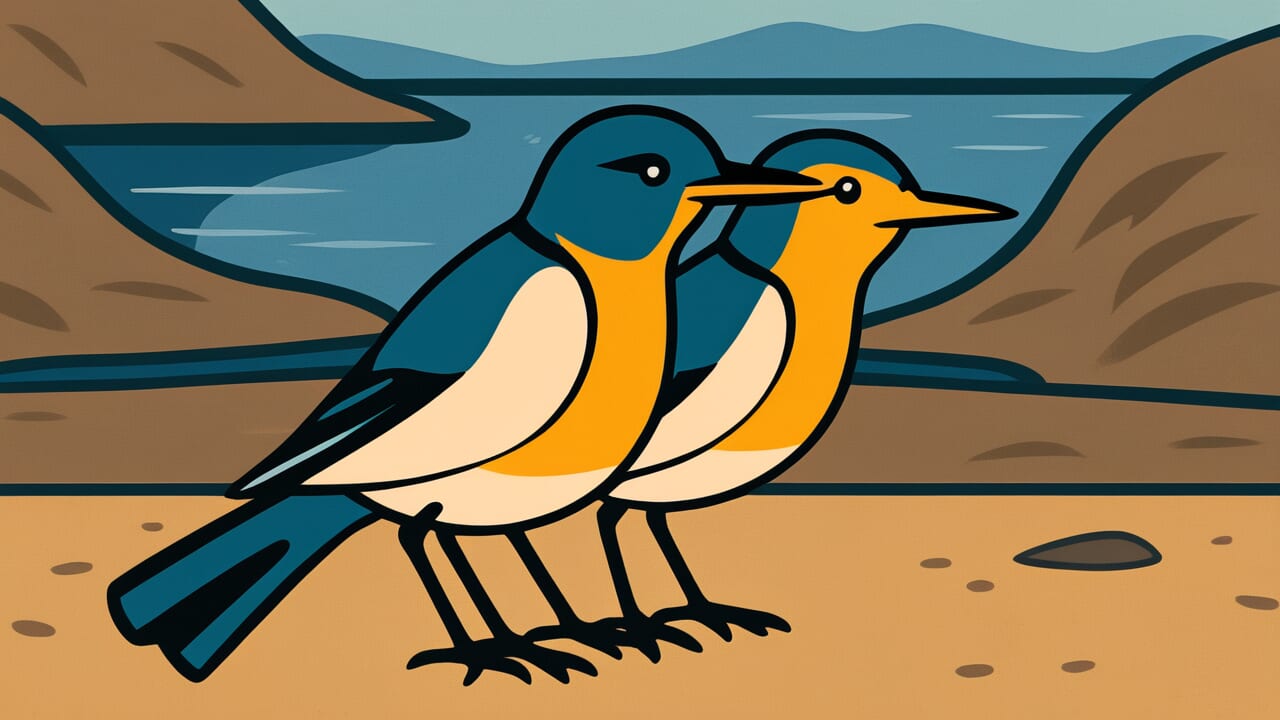How to Read “A snipe’s beak misalignment”
Isuka no hashi no kuichigai
Meaning of “A snipe’s beak misalignment”
“A snipe’s beak misalignment” is a proverb that describes situations where people who should cooperate don’t see eye to eye. It refers to married couples, family members, or teammates whose opinions and ideas clash.
The saying comes from the crossbill bird, whose upper and lower beak cross over each other. This physical mismatch mirrors how people’s opinions sometimes don’t align.
This proverb is used especially when close relationships experience conflict. It doesn’t describe strangers arguing. Instead, it points out disagreements between spouses, parents and children, or work colleagues who should be united.
Today, you can use this expression for family disagreements or team conflicts. The phrase carries a critical tone but also suggests acceptance. It acknowledges that misalignment happens naturally and isn’t always catastrophic.
Origin and Etymology
The “isuka” (crossbill) at the heart of this proverb is a finch family bird. It lives in Japan’s mountain regions and measures about 15 centimeters long.
The bird’s most striking feature is its crossed beak. The upper and lower parts don’t align but instead cross to the left or right. This unique shape evolved to extract seeds from pinecone gaps.
The proverb’s exact literary origin remains unclear. However, the crossbill’s beak shape has fascinated people since ancient times. The misaligned beak naturally reminded observers of human disagreements and conflicts.
What’s particularly interesting is how this proverb specifically addresses disagreements between close relationships. The crossbill is born with a misaligned beak, yet it lives perfectly well.
Similarly, disagreements in human relationships are natural. They don’t necessarily mean the relationship is broken. This observation may be embedded in the proverb’s wisdom.
Japanese proverbs often use natural features as metaphors for human relationships. The ancestors who chose this specific bird’s physical trait showed remarkable observational skills.
Interesting Facts
The direction of a crossbill’s beak varies by individual. Some cross right over left, others left over right. This feature appears in chicks and becomes more pronounced as they grow.
The character “鶍” for crossbill reflects its crossed beak. The bird’s alternative name “kōkai” (crossed beak) shows how this feature attracted attention throughout history.
Chinese classics also describe similar birds. This suggests that the crossbill’s unique shape was known throughout East Asia.
Usage Examples
- When my spouse and I try to plan a trip, it’s always a snipe’s beak misalignment—we never agree on anything
- We need to decide on a project direction, but it’s a snipe’s beak misalignment between the leader and sub-leader
Universal Wisdom
“A snipe’s beak misalignment” teaches us a fundamental truth about human relationships. Even in the closest bonds, complete agreement is impossible.
Married couples share their lives together as the closest possible companions. Yet two people raised in different environments with different values cannot think identically about everything.
The same applies to friends and colleagues. Even when working toward the same goal, each person’s path and methods will differ.
What’s fascinating is the proverb’s choice of the crossbill. The bird is born with a misaligned beak, yet it lives successfully. The misalignment isn’t a defect—it’s part of the bird’s nature.
Human relationships work the same way. Differences of opinion aren’t failures. They’re natural states of being.
Our ancestors may have wanted to teach tolerance through this natural observation. The wisdom isn’t to deny misalignment but to build relationships accepting it as a given.
Don’t seek perfect agreement. Instead, acknowledge differences and walk together anyway. This proverb contains this mature approach to human relationships.
When AI Hears This
From a biological perspective, the crossbill’s beak reveals remarkable design thinking. The bird inserts its beak between pinecone scales and twists to extract seeds.
The crossed beak is perfectly optimized for this twisting motion. It’s a specialized tool that enables a feeding method impossible for straight-beaked birds.
The key concept here is functional trade-off. In evolution, maximizing one function often sacrifices another. The crossbill specialized for pinecones but lost efficiency at picking seeds from the ground.
However, in pine forests, the advantage of monopolizing pinecones outweighs the disadvantage. Few competing birds can access this food source. In other words, the crossbill chose specialization over versatility.
Even more interesting is the co-evolution between crossbills and pine trees. Hard pinecone scales are defense mechanisms protecting seeds. But crossbills evolved the key to break through this defense.
Then pine trees developed harder scales, and crossbills evolved stronger beaks. This arms race-like interaction produced the extreme beak shape we see today.
The proverb’s essence is that perfection’s definition changes with context. True adaptation isn’t universal correctness but optimization for specific purposes.
Lessons for Today
This proverb teaches modern people that we don’t need to fear disagreements. At home or at work, when opinions clash, we worry the relationship might break.
But just as the crossbill’s beak is naturally misaligned, differences are natural. They’re not signs of failure.
What matters isn’t denying misalignment but deciding how to move forward while acknowledging it. When your opinion differs from someone else’s, they’re not necessarily wrong. They simply hold a different perspective.
Having the capacity to accept that difference is the first step toward building mature relationships.
In modern society, social media makes opinion conflicts sharper and more intense. That’s exactly why we need this proverb’s wisdom.
Don’t demand perfect agreement. Continue dialogue while accepting differences as a given. This attitude will make your relationships richer and stronger.
Misalignment isn’t the end. It’s the beginning of understanding each other.



Comments